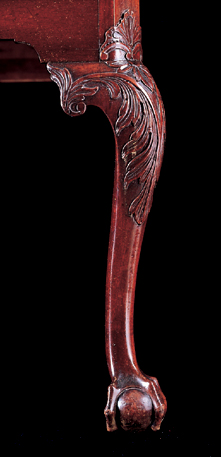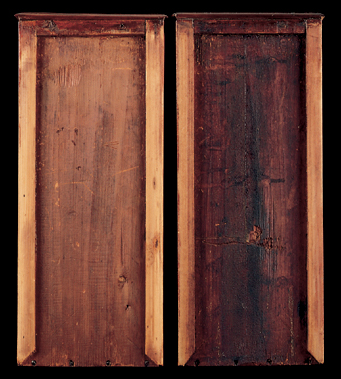
| Dressing table Attributed to the cabinet shop of Henry Clifton and Thomas Carteret and the carving shop of Nicholas Bernard, Philadelphia, 1750-1755 Mahogany, tulip poplar, and pine Lent by a private collection |
This dressing table is superb example of Philadelphia case furniture from the early 1750s. Its nearly identical in structure to a dressing table and matching high chest made by cabinetmakers Henry Clifton and Thomas Carteret in 1753. Moreover, the color of the interior dustboards, glue blocks, and other secondary components is convincing. All of the parts have appropriate evidence of wear, shrinkage, and oxidated or naturally darkened surfaces.
| Dressing table American, c. 1957 Mahogany , tulip poplar, and yellow pine Lent by the Chipstone Foundation 1957.7 |
 |
 |
 |
 |
 Stain used to obscure new or incongruous surfaces The faker pieced our the drawer sides and stained the bottoms to hide reworked surfaces and color discrepancies resulting from the use of period components. He also used stain to obscure the newly scalloped lower edge of the backboard. |